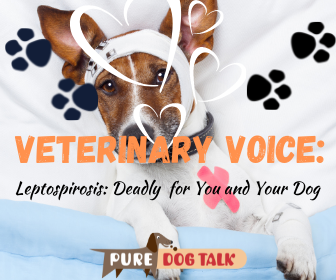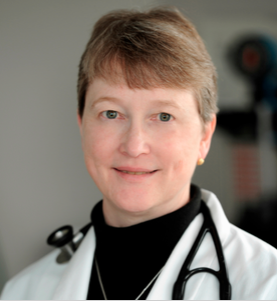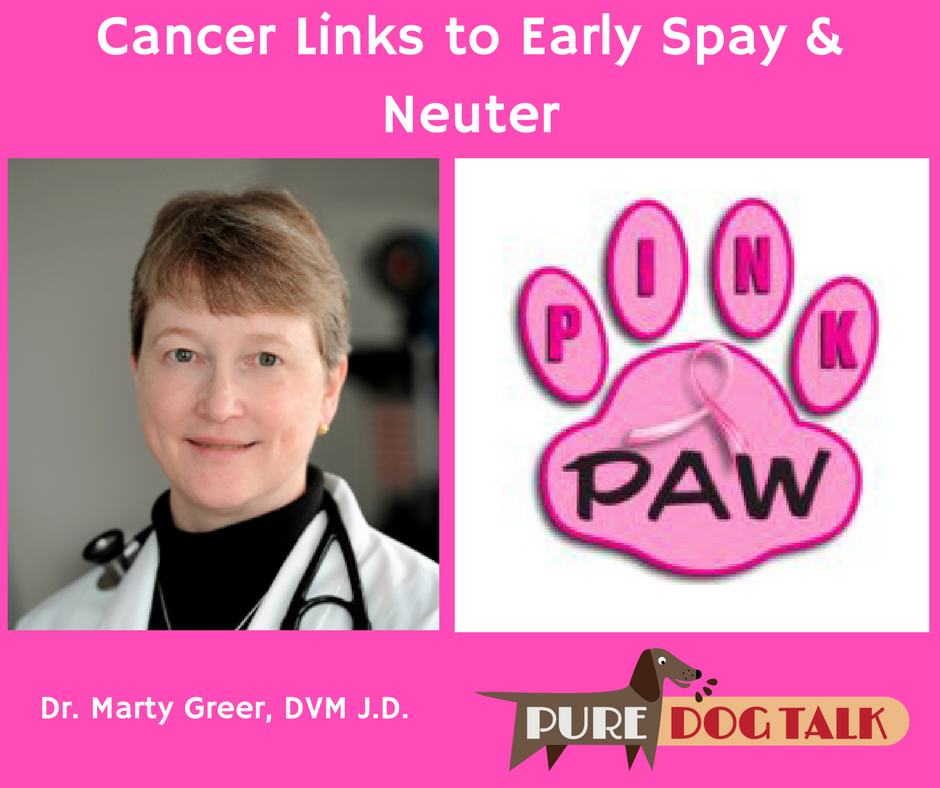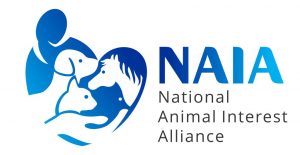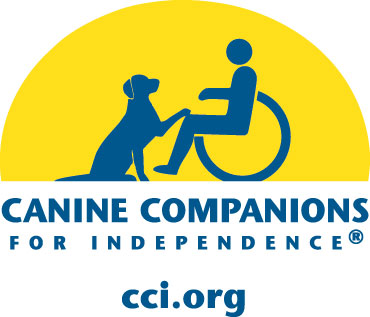681 – Tube Feeding: When, Why and How with Dr. Marty Greer
Tube Feeding: When, Why and How with Dr. Marty Greer
Dr. Marty Greer joins host Laura Reeves for a run down of when, why and how to tube feed neonates.
New born puppies who can’t or won’t nurse for whatever reason may be fed with a tube passed directly to the stomach.
“I just want people to know that dying of starvation is not an option at my house,” Greer said. “Different people have different thresholds and that’s my threshold, is you are not going to die of starvation.”
Marty and Laura walk through the “why”s of tube feeding, along with when to make that decision, what to do and what not to do.
“Usually it’s just for a few days,” Greer said, “sometimes a week or two until they catch on, start latching, start gaining and then they do great. But some dogs are slower than others and I see some puppies that are just really slow to grow. They may be half the size the littermates. And again, they may have swallowing defects. There is a lot of things that (can cause puppies not to nurse well.”
Greer cautions that all puppies should be checked for cleft palate to rule out that as a cause for failure to thrive/nurse well.
“Number one is pre warm the puppy. The puppy needs to be at least 96° on a rectal thermometer. Do not feed a cold puppy #2 is pre warm the formula. Number 3 is pre measure the tube. You measure the tube from the tip of the nose to the last rib. Have a marker or piece of tape, something that you mark on the tube so that you know exactly how far the tube has to be to go to the last rib because the stomach is behind the last rib. The trachea divides about halfway there, so if you’re only in halfway, you could be in the trachea. If you’re in all the way, you have to be in the stomach.
“When you pass the tube, you keep the chin down and you pass to the left. A lot of people throw the puppy’s head up and look in the back of the oral cavity. And if you do that, you open up the airway. So keep the chin down so that you close the airway, you pass it to the left because the esophagus is left of the trachea. So go to the left.
“And then the most important thing before you feed is you pinch the puppy on the tail or the toes and make sure it can cry and you can hear it vocalizing. If the puppy can vocalize, you’re in the esophagus. If the puppy can’t vocalize You could be in the trachea, so pull out the tube, take a deep breath, go get a cup of coffee, come back and try passing the tube again. Those tips will keep you out of trouble 99% of the time. Is there a guarantee? Absolutely not. But I’m going to guarantee you that your puppies aren’t going to thrive if they don’t get enough calories.”
Marty’s video and more details on Revival Animal Health’s Learning Center.
649 – Veterinary Advice on Free Whelping Following C-Section
Veterinary Advice on Free Whelping Following C-Section
Dr. Marty Greer joins host Laura Reeves for a deep dive on the question of when your female has had a C-section and you breed her again. Is it safe to have the bitch whelp her puppies naturally? This question comes from a listener request.
“The most important thing to ask is why did you have a C-section in the first place,” Greer said. “If you had a C-section in the first place, because she’s a Bernese Mountain Dog or because she’s a Bulldog or a Frenchie or maybe a Clumber or a Corgi, some of the breeds that are more commonly having their puppies by c-section, you still have a Clumber or a Bulldog. They didn’t change breeds while they were pregnant, so that’s the most important reason.
“Secondly. What were the other reasons? Did she just have too many puppies? If she had 14 and she’s going to have eight this time, yeah, that’s a whole different conversation. If she had a puppy that was oversized or misdirected, that’s a different conversation. But it’s going to depend on what happened previously. So you really need to have a good history on what went on when this last C-section was done.
“Statistically, according to the numbers, 75% of the time the bitch has the C-section because of a bitch cause and 25% are a puppy cause. So that kind of gives you some numbers to work with is 3/4 of the time you’re probably going to need another C-section, but 1/4 of the time it was an anasarca puppy, it was a misdirected puppy, it was oversized, it had some other kind of a birth defect, two were coming at the same time, so you had a log jam. I mean you just have to try and sort that out.
“That’s the general thought. It’s “V-back” on the human side, it’s vaginal birth after C-section, V-back. So most of the time you absolutely can go ahead. From a safety perspective, there’s reason to believe that it’s going to be unsafe. You assume that the veterinarian did a nice job closing the uterus.
“What I always kind of laugh about is when veterinarians say, ‘ohh, the uterus was paper thin when I did her C-section. You can never have another litter.’ OK, you take a uterus and you put 14 puppies in it and you stretch it out like a pair of old pantyhose and you wonder why it’s paper thin. It’s supposed to be thin. That’s the way your stomach looks after Thanksgiving dinner. That’s the way your bladder looks when you need to go to the restroom. That’s the way the organ works. It stretches out and it becomes thinner, but that doesn’t mean that it’s so thin that she can’t have a normal pregnancy and a normal vaginal birth.”
493 – Leptospirosis: Deadly Disease for You and Your Dog
Leptospirosis: Deadly Disease for You and Your Dog
Dr. Marty Greer, DVM joins host Laura Reeves for deep dive and myth busting conversation about the dangers of the deadly leptospirosis infection in dogs AND humans.
“Years ago leptospirosis was in pretty significant disease,” Greer said. “And then we saw it kind of decline in frequency. Probably in the last decade or so. there’s been a reemerging of this disease. It’s a bacterial disease and there were some dogs that reacted to the lepto vaccine. If a dog was going to react to vaccine negatively it was probably either going to be lepto or coronavirus. So as a result, a lot of breeders started to drop that out of their vaccine protocols.
“However, we do see lepto in our practice on a fairly regular basis. It is most common in puppies under six months of age because their immune system isn’t as great yet. If you don’t look for lepto, you probably don’t see lepto.
“The recommendation is to not give leptospirosis vaccines to puppies under 12 weeks of age, because it tends to suppress their immune system and they have a more difficult time reacting to the other vaccines. About 12 weeks and older they should be vaccinated. It’s a series of two vaccinations, two to three weeks apart. We do recommend lepto for all the puppies in our practice unless the breeder has written into their contract not to do it.
“Unfortunately, there’s a fairly significant number of lepto cases that get undiagnosed. If you look through the list of symptoms, it’s extensive … it causes vomiting and diarrhea and cough and high liver enzymes and elevated kidney values and respiratory disease and eye disease, infertility. So, you can go right down the list and if you look at the symptoms, it’s anything that a dog can come in looking like.
Zoonotic impacts
Hawaii has the highest rates of human incidence of Leptospirosis infections, Greer noted.
“Think about the climate (in Hawaii). It’s moist, high humidity, alkaline soil. All of those factors contribute to leptospirosis being in the environment. The Midwest, southeastern states, of course, (are at higher risk).
“The more arid states like Arizona and New Mexico, California, those places tend not to have as much lepto because it’s drier. We most commonly see lepto about three to 18 months after significant flooding in an area. It spreads through the urine of infected animals, but it can also stay in the environment for an extended period of time.
“People do get lepto. There have been reports of people that work in kennels dying and farmers and veterinarians getting sick. So absolutely, positively humans can get lepto, either from their animals, their pets, from hospitalized patients or from livestock. There’s a lot of ways that people could be exposed to lepto. So if you have a possible exposure and you’re not feeling well, of course you need to let your veterinarian and your physician know.
Diagnosis
“There’s a blood test and there’s a urine test, and there is an antibody test and there’s a PCR test. So there are different ways to test depending on the symptoms that the dog is exhibiting and the stage of the disease. If the dog is recently infected and not yet on antibiotics, doing blood and urine PCR’s, where they actually look for the protein of the bacteria, is the most effective way to test.
“In a longer standing case, where the dogs have liver enzymes going up and kidney values going up, then you probably want to do a blood test, doing an antibody test. The best antibody test is done as two tests, three weeks apart. You do an acute titer and a convalescent titer looking for the titer to rise quickly over that three-week period of time.
Treatment
“(Do) not wait to put the dog on antibiotics. Baytril is not recommended. A lot of people reach for Baytril for serious infections, but it’s either amoxicillin, ampicillin or doxycycline that or the treatment of choice. They’re fairly long treatments. They are weeks of treatment to make sure that we’ve cleared not just the acute phase, but the carrier phase, where the dog would continue to shed the bacteria in the urine.”
451 – Pandemic Puppy: Inside Scoop on Marty Greer’s New Book
172 – Veterinary Voice: Cruciate Ligaments
AVOID EXPENSIVE, PAINFUL CRUCIATE LIGAMENT RUPTURE
Early spay/neuter is one of the primary indicators of a potential for a “blown knee” in our dogs, according to Dr. Marty Greer, DVM. The cruciate ligaments in the stifle joint of the dog serve as a hinge when working properly. When these ligaments are stretched, frayed or torn, the dog will be painful, limping, or “off” on a rear leg. Environmental factors such as overweight and lack of condition also can contribute as causal factors, Greer adds.
TRAUMA NOT ALWAYS THE CAUSE
WHILE TRAUMA HISTORICALLY HAS BEEN CONSIDERED THE PRIMARY CAUSE OF THIS SITUATION IN THE DOG, GREER SAYS SHE SEES MORE AND MORE DOGS WITH NO KNOWN INJURY SUFFERING FROM A DAMAGED JOINT.
“… THERE’S A HUGE INCREASE IN INCIDENCE OF CRUCIATE RUPTURES IN DOGS THAT ARE SPAYED AND NEUTERED WHEN THEY’RE YOUNG,” GREER SAID. “AND BECAUSE THERE’S BEEN A BIG MOVEMENT TO EARLY SPAY AND NEUTER FROM THE RESCUE ORGANIZATIONS AND THE HUMANE SOCIETIES FOR REASONS OF POPULATION CONTROL, THEY’VE PUT OUR DOGS AT INCREASED RISK. INADVERTENTLY, THEY DIDN’T SET OUT TO DO THAT, BUT INADVERTENTLY, THEY SET OUR DOGS UP FOR FAILURE IN THE DEVELOPMENT OF THEIR JOINTS. SO, WHEN A DOG IS SPAYED OR NEUTERED WHEN THEY’RE REALLY YOUNG, THEIR GROWTH PLATES STAY OPEN LONGER. WE KNOW THAT FROM LLAMA’S. WE KNOW THAT FROM HUMAN EUNOCHS … SO, IF YOU WALK DOWN THE AISLE IN A HUMANE SOCIETY AND YOU SEE A LONG LEGGED SKINNY STRAIGHT KNEED BLACK 60-POUND DOG, ODDS ARE PRETTY GOOD THAT IT’S A MALE THAT WAS NEUTERED WHEN HE WAS 3, 4, 5 WEEKS OLD, MAYBE TWO OR THREE MONTHS OLD. BUT WE DO KNOW THAT THE INCIDENCE IS MUCH, MUCH INCREASED IN DOGS THAT ARE SPAYED AND NEUTERED REALLY EARLY. SO THAT’S ONE FACTOR THAT REALLY NEEDS TO BE TAKEN INTO ACCOUNT.”
Anterior Cruciate Ligament (ACL) Rupture
Rupture of the anterior or cranial cruciate ligament is more common after gonadectomy than in intact dogs (Whitehair et al. 1993; Duval et al. 1999; Slauterbeck et al. 2004). Breeds at risk for rupture of the ACL include the Akita, American Staffordshire terrier, Chesapeake Bay retriever, German shepherd dog, golden retriever, Labrador retriever, mastiff, Neopolitan mastiff, Newfoundland, poodle, rottweiler and St. Bernard (Duval et al. 1999; Harasen 2003). Other risk factors include obesity and abnormal angulation of the stifle (Ragetly et al. 2011). One could argue that increased risk of ACL injury after gonadectomy is because of decreased athleticism and obesity in gonadectomized animals but the trend stands even in studies that statistically compensated for these effects in dogs. Joint laxity may differ under varying hormonal stimuli, suggesting one possible cause‐and‐effect mechanism. Another hypothesis is increasing stifle angulation with asymmetry of growth plate closure in the femur and tibia.
https://onlinelibrary.wiley.com/doi/full/10.1111/j.1439-0531.2012.02078.x
Tick borne diseases that can cause joint inflammation are another area Greer notes that may cause complications. Often times, a dog will not have a fully ruptured ligament, but these important sort of elastic bands in the joint will have frayed or “stretched.” Treating these dogs with crate rest, testing for tick borne diseases and treating with a prophylactic course of Doxycycline that both treats tick borne diseases and confers some anti-inflammatory process in the joint is Greer’s recommendation.
Patellar luxation is a genetic disorder that serves as complicating factor for potential injury to the knee joint as well, according to Greer.
Surgery to repair a torn cruciate ligament is expensive and requires the best orthopedic surgeon you can find, Greer said. But it isn’t an emergency situation. If you suspect a cruciate injury,
- Keep the dog quiet and crated.
- Take it to your veterinarian for diagnosis.
- Research the best surgeons available in your area.
- Be diligent about maintaining *strict* crate rest during recovery.
We hope you enjoy today’s podcast with Dr. Greer. For more information on this topic, visit:
https://www.researchgate.net/publication/312054514_Top_5_Genetic_Diseases_of_Dogs
125 – Marty Greer DVM JD|Cancer Links in Early Spay and Neuter
Dr. Marty Greer, DVM JD on Pure Dog Talk
Recorded at the NAIA Animal Nation Conference in Washington, D.C.
Marty Greer is both a vet and an attorney and speaks with Laura Reeves about cancer links to early spay and neuter, Pink Paw for Cancer, and Canine Companions for Independence.
Marty Greer Helps Canine Companions for Independence
A new addition to Marty’s family is a new puppy to raise and train for Canine Companions for Independence. While not the intended topic of this interview, new puppies in the household seem to demand top-of-mind attention.
Canine Companions for Independence breeds and train dogs to help with mobility – pick up keys, open or close doors, and fetch items from the refrigerator. Activities that a handicapped or limited individual needs help with to live more independently.
Cancer Links to Early Spay and Neuter
Breast Cancer is one of the top 3 cancers that affect dogs, as well as cats. Per Marty Greer, research now shows that intact dogs or dogs with later spays, 4 years or older, have a significantly lower risk of acquiring breast cancer.
Breast Cancer in dogs is usually surgically treatable when discovered early, while more serious in cats.
Pink Paw – October Breast Cancer Month
Examine for Breast Cancer Monthly
To examine, just feel along mammary chain, down one side from front to rear and then the other side.
Feel for lump around or underneath each teat.
For women, try doing your exam on the same day as your dog!
If not sure, ask your vet to show you.
Pyometra Risk Based Upon Breed
Research from Sweden, where pet insurance enables better research, suggests that certain breeds have higher pyometra risk. Bernese Mountain Dogs have up to a 48% risk. Listen as Marty Greer explains the findings.
Spay, Neuter and Cancer Articles
Biography of Dr. Marty Greer, DVM JD
I received my Bachelor of Science in 1978 and my DVM in 1981 from Iowa State University in Ames Iowa. In 1982 I established the Brownsville Small Animal Clinic in Dr. Griffith’s practice building and in 1988, moved the practice to Lomira.
I have a special interest in Pediatrics and Reproduction. In 2002, I opened a Canine Semen Freezing Center, International Canine Semen Bank – Wisconsin (ICSB-WI/IL) and became Penn-Hip Certified.
On my first attempt at using extended semen, I bred the practice’s first litter of pups from frozen semen in 1998. The advent of in-house quantitative progesterone testing has made this process much more successful.
My husband, Dr. Daniel Griffiths, and I have two children, Katy, married to Tim, an entomology Ph.D. student at Purdue, and Karl, married to Kelly. In addition, we raise and show Pembroke Welsh Corgis and Danish Swedish Farmdogs. We also have cats, a llama, and sheep. Our family has raised 5 puppies for Canine Companions for Independence, a service dog organization.
The practice has contributed to pharmaceutical and nutritional research as an investigator for Abbott Laboratory, Deprenyl Animal Health, Pfizer, Virbac, and Hill’s Pet food Corporation. I have also been featured in articles in Veterinary Economics.
In 2005, I was appointed by Governor Jim Doyle to a position on the Veterinary Examining Board of the Department of Safety and Professional Services, where I served for 8 years.
In 2010, I graduated from Marquette Law School. I practice law part-time with my law partner, Attorney Sheila Kessler, at Animal Legal Resources LLC.
I am active in the community as a member of the AVMA, NEWVMA, ASVBP, APDT, AAFP, SVME, ACSMA, The Society for Theriogenology, the Fond du Lac Kennel Club, The Kettle Moraine Kennel Club, the Pembroke Welsh Corgi Club of America, Lakeshore Pembroke Welsh Corgi Kennel Club, and the Lomira Area Chamber of Commerce.
I am on the Board of Directors for the Society for Veterinary Medical Ethics, American Veterinary Medical Law Association, and the Society for Theriogenology. I served on the Animal Welfare Committee and Education Committee for the Wisconsin Veterinary Medical Association. I am also president of the National Animal Interest Alliance.



